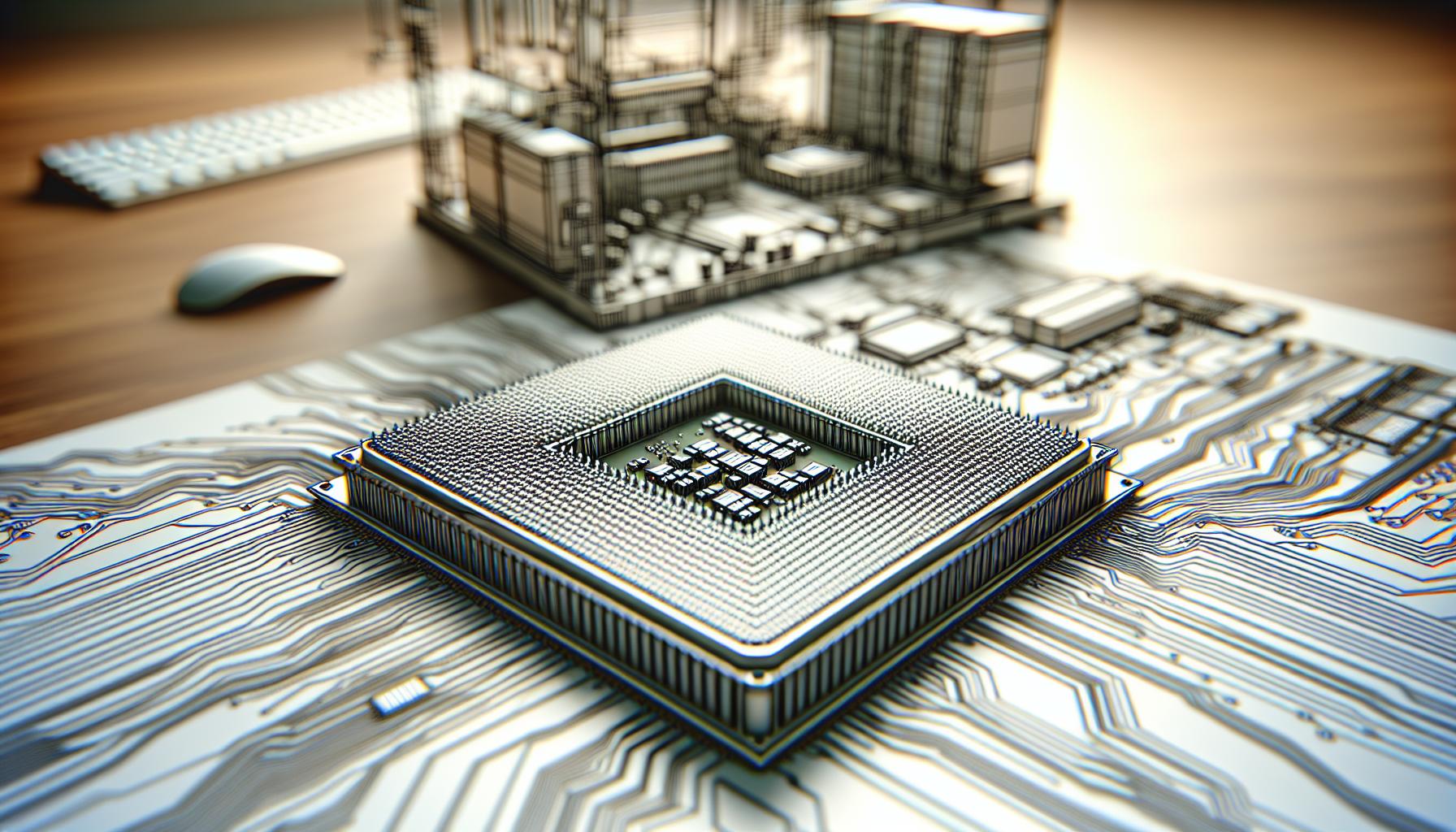In modern digital era, the words “cache” and “cash” might sound similar, but they couldn’t be more different. We often hear about cache in the context of technology—it’s all about speed and efficiency. A cache stores data temporarily to help websites and applications load faster, enhancing our online experience. On the other hand, cash is the tangible currency that fuels our daily transactions, ensuring we can buy our morning coffee or pay for that last-minute gift.
Understanding the distinction between cache and cash is crucial as we navigate both the digital and physical worlds. While one boosts our digital interactions, the other keeps our economic wheels turning. Let’s investigate into how these two terms impact our lives in unique yet equally important ways.
Key Takeaways
- Understanding the distinction between “cache” and “cash” is essential, as they play significant roles in digital efficiency and tangible economic transactions, respectively.
- Cache enhances system performance by storing frequently accessed data, reducing latency and improving user experiences in digital applications such as e-commerce and online banking.
- Cash, as a physical currency, remains vital for direct transactions and situations lacking digital infrastructure, despite the rise of digital payment methods.
- The interplay between cache and cash highlights their distinct impacts on modern transactions, with cache driving technological efficiency and cash providing tangible transaction reliability.
- Real-world applications of cache in technology improve processing speeds and operational efficiency, while cash ensures reliable transactions in areas not yet fully integrated with digital economies.
- Future advancements in caching promise improved resource efficiency and integration with emerging technologies, ensuring systems meet the demands of high-performance scenarios.
Understanding “Cache or Cash”
In our digital age, it’s easy to confuse “cache” with “cash” due to their phonetic similarity, but they possess distinct meanings. A cache, in a non-technological sense, refers to a concealed storage location for items like provisions or tools, which can be crucial in various scenarios. In computer science, a cache significantly boosts system performance by storing frequently accessed data, enabling quicker access and smooth operation. This is especially relevant in today’s digital world where speed and efficiency are paramount.
Conversely, cash represents tangible currency, encompassing both coins and notes, distinct from electronic transactions or alternative payment methods. The concrete nature of cash makes it indispensable for direct transactions or situations lacking digital infrastructure. Knowing these differences helps us navigate both our physical and virtual worlds effectively. Though unrelated to direct language learning tools like IELTS or TOEFL, understanding “cache” and “cash” enhances our comprehensive language skills by illustrating semantic depth.
The Role of Cache in Technology

Cache plays an essential role in modern technology, bridging the gap between high-speed data processing and efficient system performance.
Definition and Function
Cache memory is a component, either hardware or software, designed to store frequently accessed data and instructions. It ensures quicker access times for the CPU and system components by acting as a high-speed buffer between the CPU and main memory. This reduces the time the CPU requires to access data, significantly enhancing performance.
Types of Cache
Cache memory is typically divided into multiple levels, each with distinct characteristics:
- L1 Cache: The smallest and fastest, located directly on the processor chip.
- L2 Cache: Larger and slightly slower than L1, yet faster than main memory.
- L3 Cache: The largest with slower access times compared to L1 and L2.
Hardware and Software Caching
Cache is implemented in both hardware and software:
- Hardware Cache: Utilised by CPUs, SSDs, and HDDs to store frequently accessed data.
Importance in Data Retrieval
The cache enhances data retrieval by storing repeatedly accessed information closer to the CPU. This proximity allows for quicker access, reducing the need to retrieve data from slower main memory. A faster retrieval process not only saves time but also improves overall efficiency, enabling devices to perform more tasks simultaneously.
Impact on System Performance
Cache significantly boosts system performance by reducing bottlenecks in data processing. With multiple levels of cache reducing access times, systems can perform tasks more swiftly and smoothly. This improvement is particularly vital in environments requiring high processing speeds, such as gaming and scientific computing, where delays could lead to reduced performance or errors.
Cash: The Traditional Payment System
Cash serves as a fundamental and time-proven method for conducting transactions. It comes in the form of coins and paper currency, providing a tangible medium for exchanging value.
Historical Perspective
The evolution of cash spans thousands of years. Minted coins first emerged as a payment medium around 600 B.C. in what’s now western Turkey. This marked the beginning of a structured monetary system. By 1260 CE, China introduced paper money during the Yuan dynasty. This innovation transformed global economies as it spread to Europe by the 16th century, leading banks to issue paper banknotes exchangeable for metal coins. Government issuance took over by the 19th century, with the gold standard of the 1870s linking currency to national gold reserves.
Advantages and Disadvantages
Cash offers distinct advantages, including universal acceptance and immediate value exchange. It remains a reliable option in areas with limited digital infrastructure. But, handling cash means managing risks like theft and counterfeiting. Also, cash transactions lack a digital trail, posing challenges for record-keeping and financial planning. The rise of digital technologies presents opportunities yet highlights cash’s limitations in a rapid, interconnected world.
The Interplay Between Cache and Cash
Exploring the interplay between “cache” and “cash” helps us understand their influence on technology and financial systems. Though pronounced similarly, these terms impact modern transactions distinctly.
Similarities and Differences
Both “cache” and “cash” share a similarity in pronunciation, often leading to confusion. But, they differ greatly in meaning and application. Cache serves as a technology for storing data temporarily in computing systems, optimising performance by reducing latency and improving data access times. Conversely, cash denotes physical legal tender, such as coins and banknotes, serving as a medium of exchange in economic transactions.
In computing, caches maintain frequently accessed data, making it readily available to processors, thereby enhancing system efficiency. In financial contexts, cash supports direct transactions, offering universal acceptability and immediate value exchange. While cache is invisible to users, silently working behind the scenes, cash is tangible and involves physical exchanges.
Influence on Modern Transactions
In modern transactions, cache and cash each play a significant role. Caching systems boost the performance of online sales platforms and digital banking. By reducing load times, caches dramatically enhance the user experience, ensuring faster transaction processing and real-time updates for services such as e-commerce and online banking.
Cash continues to hold importance in areas lacking robust digital infrastructure, facilitating instant transactions without the need for electronic devices. Even though the rise of digital payments, cash provides a reliable payment method during technological disruptions or in regions where digital literacy is low.
Recognizing the distinctions between cache and cash equips us with a deeper understanding of their roles in our interconnected world, enabling more efficient navigation of digital and physical marketplaces.
Real-World Applications of “Cache or Cash”
In the digital age, cache and cash play significant roles in enhancing efficiency across various sectors. Understanding their applications helps us navigate the complexities of modern life.
Case Study: E-Commerce Platforms
Cache significantly improves e-commerce efficiency. Websites store temporary data such as product pages and user preferences in caches, resulting in quicker load times and smoother user experiences. When customers browse an online store multiple times, cached images and product descriptions reduce server demand and streamline operations.
Cash continues to hold relevance in e-commerce. While digital payments dominate, cash on delivery remains an option in certain markets. This method provides convenience and security for consumers wary of digital transactions.
Technological Innovations
Cache supports technological advancements by boosting processing speeds and reducing latency. CPUs utilise caches to store frequently accessed data, enhancing system performance. This technology is crucial in high-demand industries like gaming and scientific computing, where milliseconds can impact outcomes.
Cash drives innovation in financial technology. Digital wallets and online banking emerged to simulate cash transactions, offering security and ease of use. Even though these advances, cash remains indispensable in areas lacking reliable internet infrastructure.
Our exploration into these applications reveals the indispensable role of cache and cash across digital and physical domains.
Challenges and Future Prospects
Cache, an essential component in computing, faces several challenges alongside its prospects. Corruption is a notable issue; cached data can become corrupted and cause application crashes or incorrect data display. These situations demand robust error-checking mechanisms to maintain data integrity.
Advancements in technology also present prospects for cache. As systems become more sophisticated, cache will evolve to support enhanced performance, leveraging faster speeds and smarter algorithms. Future developments may focus on improving resource efficiency, conserving battery power, and facilitating offline work by refining data storage methods.
Also, as computing systems integrate artificial intelligence and machine learning, caching mechanisms are likely to adapt, ensuring seamless data access and processing. With the rapid pace of technological change, continuous innovation in cache solutions will be crucial for meeting future demands in diverse sectors.
Conclusion
Understanding the nuances between cache and cash is crucial in today’s rapid world. While cache enhances our digital experiences by improving system performance, cash remains a cornerstone of economic transactions, especially where digital reach is limited. Both play pivotal roles in shaping how we interact with technology and manage our finances. As we continue to navigate the complexities of modern life, recognising the distinct functions and benefits of cache and cash can empower us to make informed decisions in both our digital and physical environments. This knowledge not only enhances our language skills but also equips us to better adapt to future technological and financial advancements.
Frequently Asked Questions
What is the primary function of cache in technology?
Cache enhances system performance by temporarily storing frequently accessed data and instructions. This allows for faster data retrieval and reduces latency, benefiting websites and applications by improving load times and overall efficiency. It plays a crucial role in high-speed processing environments like gaming and scientific computing.
How does cache differ from cash in everyday use?
Cache and cash serve different purposes. Cache is a digital tool for improving performance in computing systems, storing data for quick retrieval. Cash, on the other hand, is physical currency used in everyday transactions for goods and services, with advantages such as universal acceptance.
Why is understanding the difference between cache and cash important?
Understanding the difference helps navigate both physical and virtual environments effectively. While cache optimises system performance, cash remains essential for transactions. Recognising their distinct roles and applications enhances language skills and aids in comprehending various technological and financial contexts.
What are the risks associated with using cash?
Cash poses risks such as theft, loss, and counterfeiting. Additionally, it lacks a digital trail, complicating record-keeping and financial planning. In an increasingly digital world, these risks can impact how individuals and businesses manage and secure their finances.
How does cache improve e-commerce efficiency?
Cache enhances e-commerce efficiency by storing temporary data, leading to quicker website load times and seamless user experiences. This optimisation benefits online sales platforms by improving transaction processing speeds, ultimately increasing customer satisfaction and engagement.
What is the historical significance of cash?
Cash has evolved over centuries, originating from minted coins around 600 B.C. to the introduction of paper money in China. Its universal acceptance and immediate value exchange make it significant, especially in areas with limited digital infrastructure, where it remains a primary payment method.
What are the future prospects of cache technology?
Future cache technology will likely focus on adaptive mechanisms, integrating AI and machine learning for seamless data access. As technology advances, cache solutions will evolve to meet performance demands across sectors, ensuring efficient data handling and offline capabilities in diverse applications.



